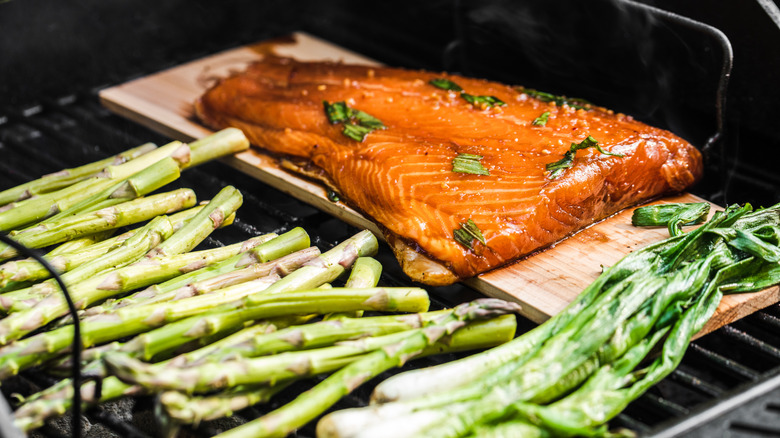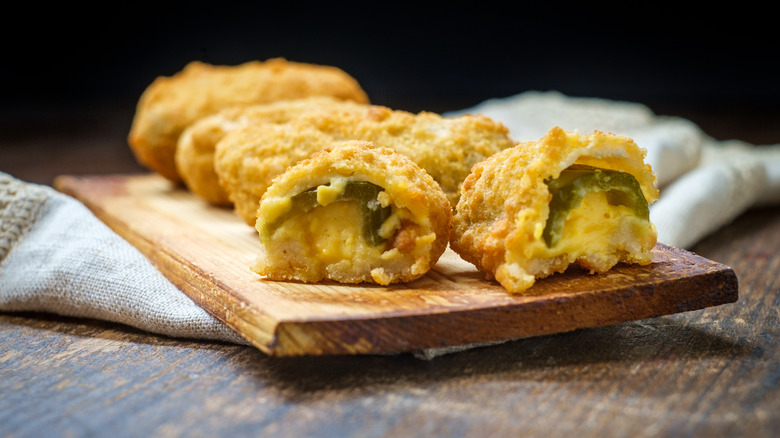The Prep Step You Can't Skip When Grilling With Wood Planks
Wood plank cooking is a centuries-old technique springing from North American Indian communities, particularly coastal tribes who thrived on salmon fishing in the Pacific Northwest. The renowned outdoor cedar bakes featured whole salmon fishes pegged to wooden boards, then slowly smoked and sizzled around open fires.
Today's versions of wood planking have considerably expanded the possibilities, with grill and oven planks now harboring piles of shrimp, poultry, pizzas, vegetables, appetizers, smoke-infused desserts, and fruits such as bananas, apples, peaches, and mangos. Professional chefs and cookbook authors offer recipes ranging from cedar-baked brie and berries to nostalgia-inspired cedar plank chocolate brownie s'mores.
The open fires of early plank cooking may be rare these days, but the same concept survives via outdoor grills and even indoor ovens. The idea is to infuse the food with earthy, smoked flavor from aromatic wood planks made from, most commonly, cedar but also hickory, mesquite, alder, maple, and apple.
The resulting flavor differs based on the wood and how the food absorbs the smoke, but there's one thing they all share: the crucial step of soaking the planks in water prior to their flame or oven journeys. Some people skip this step when grilling with wood planks, but it's to their disadvantage.
Full water immersions prevent a fire hazard and creates steam for better flavor
Dunking wood planks into a water bath before topping them with uncooked food accomplishes several things. It prevents hot grill flames from licking their way through dry wood, sending your dinner into a fiery blaze. You are, after all, cooking with wood, which is a highly flammable material.
The water submersion also creates steam as the boards heat up, fully infusing food with a woodsy flavor while keeping the boards moist throughout the process. Even better, steam keeps the food itself from drying out. Though water is the crucial component here, some chefs experiment with adding other liquids, such as wine or apple cider, with varying flavor effects.
The liquid immersion must be full, covering both sides of the plank for at least an hour and up to two hours. An exception to the prolonged soak is if you'll be plank-cooking in a standard indoor oven. In that case, the wood is much less likely to ignite, so it's okay to remove it from the water after 15 minutes.
If necessary, use a kitchen pan or bowl as a weight to keep the wood from popping to the water's surface. You might want to rub a light coating of oil over the wood surface before placing it on the hot grill, which seasons the wood and helps keep food, especially fish skins, from sticking to the plank. Just place food directly onto the soaked board, or for extra piquancy, try first laying sprigs of rosemary, parsley, or thyme.

